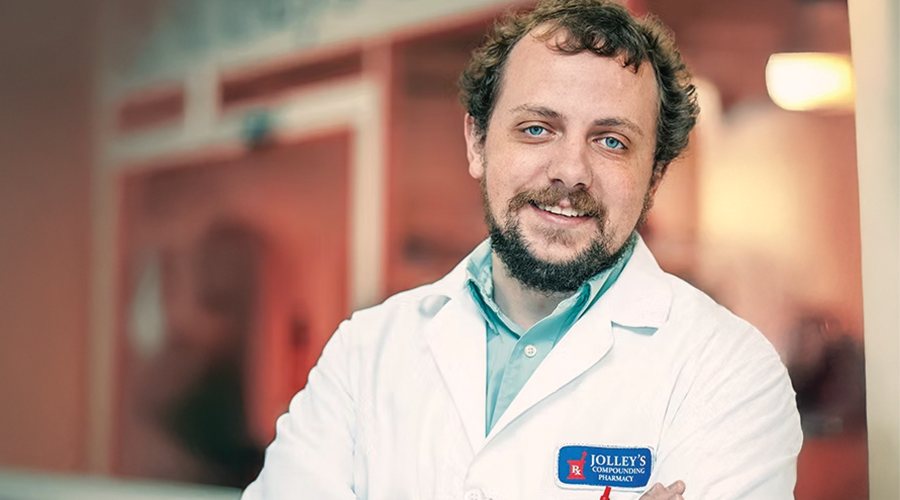Inside: As independent pharmacies struggle to survive, one independent pharmacy has learned how to thrive. Discover how this community pharmacy grew from local to national while keeping its independent roots.
Curexa Pharmacy knows how to grow with the times. Its 15-year evolution reveals a successful blueprint for independent community pharmacies living in a landscape that seems only to favor big players.
Licensed in 48 states, Curexa Pharmacy’s three brick-and-mortar pharmacies serve local patients at two locations in southern New Jersey and one in Chicago. But its reach extends to nearly the entire U.S., providing patients with specialty medications and compounding needs.
Curexa Pharmacy has succeeded by growing while remaining grounded.
“Although our footprint is expansive, we are a 100 percent pharmacist-owned and operated company,” said Tom Keyack, Pharm.D., Executive Director of Business Development at Curexa Pharmacy. “We feel passionate about our obligation to take care of our community and our surrounding geographies.”
What began as a small retail community pharmacy in 2003 now employs 90 people and focuses on specialty medications and compounding services.
Even as Curexa Pharmacy has grown, its motivation has remained the same: caring for patients.
“The greatest success comes from our strong emphasis on always taking the absolute best care of patients,” Keyack said. “By taking care of our patients, everything falls into place.”
How the pharmacy grew from good to great
Mark Taylor, MBA, B.S.Pharm, founded Jersey Shore Pharmacy in 2003 as a small retail pharmacy, which later became Curexa Pharmacy. Although he had success running the community pharmacy, the industry began to shift as mail order grew.
Sensing the shift and feeling the competitive pressure, in 2007, Taylor decided to change the pharmacy’s focus to a long-time passion of his: compounding.
“Compounding pharmacy is the last stronghold where pharmacists can create innovative and creative prescription and pharmaceutical service offerings in a way that they have autonomy to do so,” Keyack said. “That’s the perception Mark has always embodied with compounding pharmacy.”
Then in 2013, Taylor once again adapted to the changing tides of pharmacy. “Keeping in touch with what was happening in the broader healthcare landscape and understanding where the patient care need existed, we got into specialty pharmacy,” Keyack said.
Curexa Pharmacy’s distinct approach to specialty pharmacy goes beyond the medications, embodying its mission of prioritizing the patient.
“A larger part of our business is specialty, but roped into specialty includes products that have very specific coverage reimbursement support requirements,” Keyack said. “We understand how to offer prior authorization and appeals and denial-type services to bring those prescriptions through that whole continuum to the patient.”
Curexa Pharmacy created a team of patient care experts solely dedicated to navigating patients through the complex specialty prescription process from start to finish.

A community pharmacy overcoming giants
Keyack said Curexa Pharmacy faces one of its biggest obstacles today: the growing vertical integration across the industry.
“You have consolidation happening in literally every sector of health care at this point, even pharmacies themselves. Independents are being gobbled up by large players,” he said. “With consolidation comes funneling of business into avenues that make it harder for small players like us to take care of patients and to operate.”
As companies turn into giants, they gain more power, Keyack said.
Manufacturers limit their distribution networks. Pharmacy benefits managers (PBMs) reimburse less for the products they dispense. Behemoth specialty pharmacies box out smaller pharmacies, like Curexa Pharmacy.
And, patients suffer from reduced access to medicine and health networks. “That goes against our mantra,” Keyack said. “Which is to secure the best pharmacy care and best access possible for patients.”
Through it all, Curexa Pharmacy continues to grow because of its dedication to patients. Everything comes back to that.
“Scalability all stems from taking care of the people who get the products we dispense,” he said. “If we think of creative ways to get products to patients and ensure they’re being taken care of from a clinical and safety standpoint, and make sure they’re getting access at the lowest possible cost, then things fall into place financially and otherwise.”
A bright future for independent pharmacy
“Even in the crazy times of consolidated health care that we’re living in now, I think there are still opportunities for coming up with innovative and creative solutions to take care of patients as best as possible,” Keyack said.
“It’s only a matter of time until the community of patients and physicians out there want to go back to the time when pharmacy care was more accessible.”
One key to the future success of community pharmacy, Keyack said, is effective lobbying on Capitol Hill.
“Right now, pharmacists don’t get the recognition they deserve. Pharmacists are the most accessible yet least understood member of the health community,” he said. “We’re not considered to be providers just yet. Hopefully, that’s coming.”
But even without provider status, as community pharmacy looks to grow, success boils down to one thing. “Never lose sight of taking exceptional, personalized care of patients,” Keyack said.
Want more pharmacy business tips and advice? Sign up for our e-newsletter.












